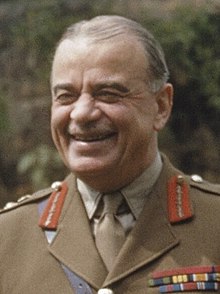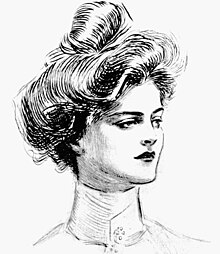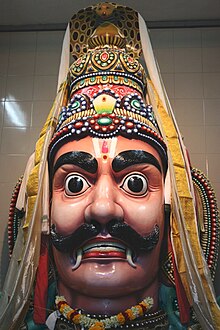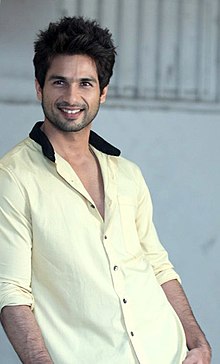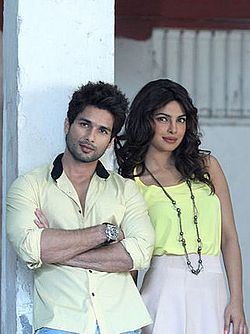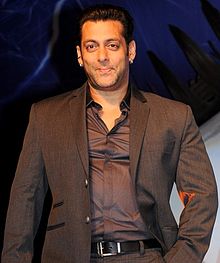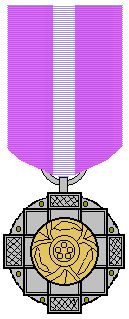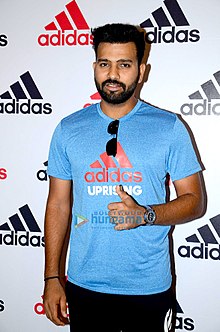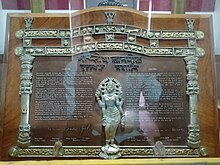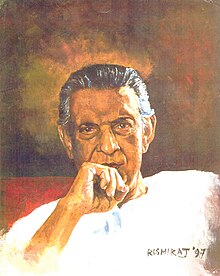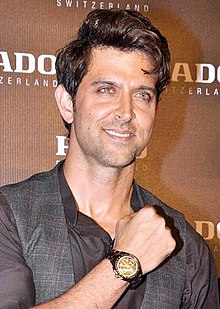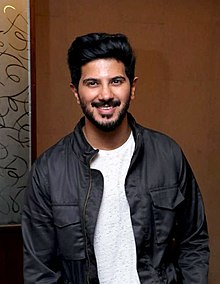Portal:India
Introduction

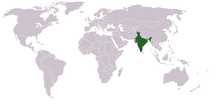
India, officially the Republic of India (ISO: Bhārat Gaṇarājya), is a country in South Asia. It is the seventh-largest country by area; the most populous country as of June 2023; and from the time of its independence in 1947, the world's most populous democracy. Bounded by the Indian Ocean on the south, the Arabian Sea on the southwest, and the Bay of Bengal on the southeast, it shares land borders with Pakistan to the west; China, Nepal, and Bhutan to the north; and Bangladesh and Myanmar to the east. In the Indian Ocean, India is in the vicinity of Sri Lanka and the Maldives; its Andaman and Nicobar Islands share a maritime border with Thailand, Myanmar, and Indonesia. (Full article...)
Selected pictures
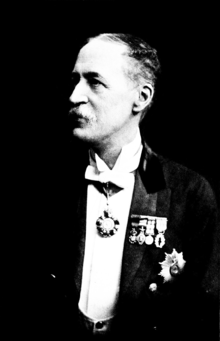
Sir Herbert Hope Risley KCIE CSI FRAI (4 January 1851 – 30 September 1911) was a British ethnographer and colonial administrator, a member of the Indian Civil Service who conducted extensive studies on the tribes and castes of the Bengal Presidency. He is notable for the formal application of the caste system to the entire Hindu population of British India in the 1901 census, of which he was in charge. As an exponent of scientific racism, he used anthropometric data to divide Indians into seven races.
Risley was born in Buckinghamshire, England, in 1851 and attended New College, Oxford University prior to joining the Indian Civil Service (ICS). He was initially posted to Bengal, where his professional duties engaged him in statistical and ethnographic research, and he soon developed an interest in anthropology. His decision to indulge these interests curtailed his initial rapid advancement through the ranks of the Service, although he was later appointed Census Commissioner and, shortly before his death in 1911, became Permanent Secretary at the India Office in London. In the intervening years he compiled various studies of Indian communities based on ideas that are now considered to constitute scientific racism. He emphasised the value of fieldwork and anthropometric studies, in contrast to the reliance on old texts and folklore that had historically been the methodology of Indologists and which was still a significant approach in his lifetime. (Full article...)
Harrison recorded the instrumental track for "The Inner Light" in Bombay in January 1968, during the sessions for his Wonderwall Music soundtrack album. It is the only Beatles studio recording to be made outside Europe and introduced Indian instruments such as sarod, shehnai and pakhavaj to the band's sound. The musicians on the track include Aashish Khan, Hanuman Jadev and Hariprasad Chaurasia. Aside from Harrison's lead vocal, recorded in London, the Beatles' only contribution came in the form of group backing vocals over the song's final line. In the decade following its release, the song became a comparative rarity among the band's recordings; it has subsequently appeared on compilation albums such as Rarities, Past Masters, Volume Two and Mono Masters. It is the only Beatles song to never appear on any official Beatles album. (Full article...)
Founded in 2014 as a Facebook page, Manjappada later expanded and have branches in each of Kerala's 14 districts and in 12 other Indian states; Keralites in 64 other countries are also part of the group. Manjappada is also known for having one of the largest groups of travelling fans in the country, and their presence in the stadium is often called a yellow sea as they wear as much yellow as possible during the matches of the Blasters. In the 2022–23 Indian Super League season, they displayed a 11752 sq ft tifo, which is so far the largest tifo displayed during a football match in Asia. (Full article...)

Rajiv Gandhi International Airport (IATA: HYD, ICAO: VOHS) is an international airport that serves Hyderabad, the capital of the Indian state of Telangana. It is located in Shamshabad, about 24 kilometres (15 mi) south of Hyderabad and it was opened on 23 March 2008 to replace Begumpet Airport, which was the sole civilian airport serving Hyderabad. It is named after Rajiv Gandhi, former Prime Minister of India. Built over an area of 5,500 acres (2,200 ha), it is the largest airport of India by area. It is owned and operated by GMR Hyderabad International Airport Limited (GHIAL), a public–private consortium. The airport was the first airport in India to launch domestic e-boarding facility in December 2015 and international e-boarding facility in October 2020. It has also ranked in AirHelp's list of top 10 airports in the world. The fourth busiest airport in India by passengers traffic, it handled over 25 million passengers and around 150,000 tonnes (170,000 short tons) of cargo between April 2023 and March 2024.
The airport is India's first greenfield airport built under a public-private partnership model. The airport has an integrated passenger terminal, a cargo terminal and two runways. There are also aviation training facilities, a fuel farm, a solar power plant and two maintenance, repair, and operations (MRO) facilities. The airport serves as a hub for Alliance Air (India), Amazon Air, Blue Dart Aviation, SpiceJet and IndiGo. It is a focus city for Air India. (Full article...)

There Comes Papa is an 1893 painting by the Indian artist Raja Ravi Varma. The painting focuses on Varma's daughter (Mahaprabha Thampuratty) and grandson (Marthanda Varma), looking towards the left at an approaching father. Evoking both Indian and European style, the painting has been noted by critics for its symbolism regarding of the Nair matrilineal practices. (Full article...)
Developed as a heritage village, DakshinaChitra has an array of displays and relocated originals of dwellings depicting the life pattern of people in the states of southern India. The exhibits portray the architecture, art, folk performing-arts and craft of South Indian traditions. The amenities include a research unit, crafts bazaar, playground, an area to hold religious functions, stone workshop, and souvenir kiosks. There are craftsmen who permanently work at DakshinaChitra who demonstrate or explain how they make their wares. Besides workshops are conducted regularly for various crafts by artists who rent the community studio. (Full article...)

Russell's viper (Daboia russelii) is a highly venomous snake in the family Viperidae native to the Indian subcontinent and one of the big four snakes in India. It was described in 1797 by George Shaw and Frederick Polydore Nodder, and named after Patrick Russell, who wrote about it in his 1796 work An account of Indian serpents, collected on the coast of Coromandel. (Full article...)
Principal photography took place in Mumbai and various locations in Ooty. The film features a score and soundtrack composed by Raamlaxman, while Asad Bhopali wrote the lyrics. Maine Pyar Kiya considered to be one of the most iconic and loved films of the Khan and became a cult favorite from its songs, dialogues, and chemistry of the Khan and Bhagyashree. The film also established the careers of the supporting cast including Mohnish Bahl and Laxmikant Berde. (Full article...)
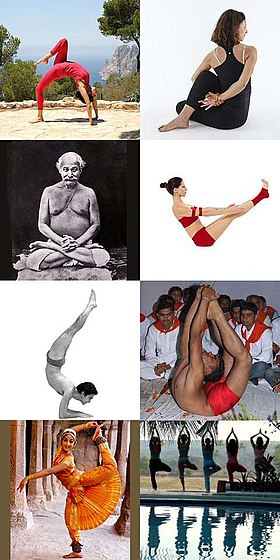
An āsana (Sanskrit: आसन) is a body posture, originally and still a general term for a sitting meditation pose, and later extended in hatha yoga and modern yoga as exercise, to any type of position, adding reclining, standing, inverted, twisting, and balancing poses. The Yoga Sutras of Patanjali define "asana" as "[a position that] is steady and comfortable". Patanjali mentions the ability to sit for extended periods as one of the eight limbs of his system. Asanas are also called yoga poses or yoga postures in English.
The 10th or 11th century Goraksha Sataka and the 15th century Hatha Yoga Pradipika identify 84 asanas; the 17th century Hatha Ratnavali provides a different list of 84 asanas, describing some of them. In the 20th century, Indian nationalism favoured physical culture in response to colonialism. In that environment, pioneers such as Yogendra, Kuvalayananda, and Krishnamacharya taught a new system of asanas (incorporating systems of exercise as well as traditional hatha yoga). Among Krishnamacharya's pupils were influential Indian yoga teachers including Pattabhi Jois, founder of Ashtanga vinyasa yoga, and B.K.S. Iyengar, founder of Iyengar yoga. Together they described hundreds more asanas, revived the popularity of yoga, and brought it to the Western world. Many more asanas have been devised since Iyengar's 1966 Light on Yoga which described some 200 asanas. Hundreds more were illustrated by Dharma Mittra. (Full article...)
Adi Shankara (8th c. CE), also called Adi Shankaracharya (Sanskrit: आदि शङ्कर, आदि शङ्कराचार्य, romanized: Ādi Śaṅkara, Ādi Śaṅkarācārya, lit. 'First Shankaracharya', pronounced [aːdɪ ɕɐŋkɐraːt͡ɕaːrjɐ]), was an Indian Vedic scholar and teacher (acharya) of Advaita Vedanta. Reliable information on Shankara's actual life is scanty, and his true impact lies in his "iconic representation of Hindu religion and culture," despite the fact that most Hindus do not adhere to Advaita Vedanta. He is seen as "the one who restored the Hindu dharma against the attacks of the Buddhists (and Jains) and in the process helped to drive Buddhism out of India." Tradition also portrays him as the one who reconciled the various sects (Vaishnavism, Shaivism, and Saktism) with the introduction of the Pañcāyatana form of worship, the simultaneous worship of five deities – Ganesha, Surya, Vishnu, Shiva and Devi, arguing that all deities were but different forms of the one Brahman, the invisible Supreme Being.
The historical influence of his works on Hindu intellectual thought has been questioned. Until the 10th century Shankara was overshadowed by his older contemporary Maṇḍana Miśra, and there is no mention of him in concurring Hindu, Buddhist or Jain sources until the 11th century. The popular image of Shankara started to take shape in the 14th century, centuries after his death, when Sringeri matha started to receive patronage from the kings of the Vijayanagara Empire and shifted their allegiance from Advaitic Agamic Shaivism to Brahmanical Advaita orthodoxy. Hagiographies dating from the 14th-17th centuries deified him as a ruler-renunciate, travelling on a digvijaya (conquest of the four quarters) across the Indian subcontinent to propagate his philosophy, defeating his opponents in theological debates. These hagiographies portray him as founding four mathas ("monasteries"), and Adi Shankara also came to be regarded as the organiser of the Dashanami monastic order, and the unifier of the Shanmata tradition of worship. The title of Shankaracharya, used by heads of certain monasteries in India, is derived from his name. (Full article...)
Swaminarayan (IAST: Svāmīnārāyaṇa; 3 April 1781 – 1 June 1830), also known as Sahajanand Swami, was a yogi and ascetic believed by followers to be a manifestation of Krishna or the highest manifestation of Purushottama, around whom the Swaminarayan Sampradaya developed.
In 1800, he was initiated into the Uddhava sampradaya by his guru, Swami Ramanand, and was given the name Sahajanand Swami. Despite opposition, in 1802, Ramanand handed over the leadership of the Uddhava Sampradaya to him before his death. According to the Swaminarayan tradition, Sahajanand Swami became known as Swaminarayan, and the Uddhava Sampradaya became known as the Swaminarayan Sampradaya, after a gathering in which he taught the Swaminarayan Mantra to his followers. (Full article...)

Women's health in India can be examined in terms of multiple indicators, which vary by geography, socioeconomic standing and culture. To adequately improve the health of women in India multiple dimensions of wellbeing must be analysed in relation to global health averages and also in comparison to men in India. Health is an important factor that contributes to human wellbeing and economic growth.
Currently, women in India face a multitude of health problems, which ultimately affect the aggregate economy's output. Addressing the gender, class or ethnic disparities that exist in healthcare and improving the health outcomes can contribute to economic gain through the creation of quality human capital and increased levels of savings and investment. (Full article...)
Raja Harishchandra (transl. King Harishchandra) is a 1913 Indian silent film directed and produced by Dadasaheb Phalke. It is often considered the first full-length Indian feature film. Raja Harishchandra features Dattatraya Damodar Dabke, Anna Salunke, Bhalchandra Phalke. and Gajanan Vasudev Sane. It is based on the legend of Harishchandra, with Dabke portraying the title character. The film, being silent, had English, Marathi, and Hindi-language intertitles.
Phalke decided to make a feature film after watching The Life of Christ (1906) at a theatre in Bombay in April 1911. In February 1912, he went to London for two weeks to learn filmmaking techniques and upon return founded Phalke Films Company. He imported the hardware required for filmmaking and exhibition from England, France, Germany, and the United States. Phalke shot a short film Ankurachi Wadh (Growth of a Pea Plant) to attract investors for his venture. He published advertisements in various newspapers calling for the cast and crew. As no women were available to play female roles, male actors performed the female roles. Phalke was in charge of scriptment, direction, production design, make-up, film editing, along with film processing. Trymbak B. Telang handled the camera. Phalke completed filming in six months and 27 days producing a film of 3,700 feet (1,100 m), about four reels. (Full article...)
The Naroda Patiya massacre took place on 28 February 2002 at Naroda, in Ahmedabad, India, during the 2002 Gujarat riots. 97 Muslims were killed by a mob of approximately 5,000 people, organised by the Bajrang Dal, a wing of the Vishva Hindu Parishad, and allegedly supported by the Bharatiya Janata Party which was in power in the Gujarat State Government. The massacre at Naroda occurred during the bandh (strike) called by Vishwa Hindu Parishad a day after the Godhra train burning. The riot lasted over 10 hours, during which the mob plundered, stabbed, sexually assaulted, gang-raped and burnt people individually and in groups. After the conflict, a curfew was imposed in the state and Indian Army troops were called in to contain further violence.
The communal violence at Naroda was deemed "the largest single case of mass murder" during the 2002 Gujarat riots; it accounted for the greatest number of deaths during a single event. Survivors faced socio-economic problems; many were left homeless, orphaned and injured. A number of shrines were destroyed and many schools were adversely affected, cancelled exams or closed entirely. The surviving victims were given shelter in relief camps provided by both the state and central government, and efforts were begun to restore destroyed properties and shrines. The state government formed a "Gujarat state commission of inquiry" for citizens to have a forum in which to make recommendations and suggest reforms. Mainstream media criticised the Gujarat government's handling of the riots; it was remarked that a number of news reports were exaggerated, and "inflammatory headlines, stories and pictures" were published, resulting in anti-Muslim prejudice among the Hindu readership. (Full article...)
Sukumar began working on 1: Nenokkadine's script after completing 100% Love (2011), making a bus driver's tale about a boy who claimed that his parents were murdered on his bus the film's base. R. Rathnavelu was the film's director of photography, and Karthika Srinivas, its editor. Devi Sri Prasad composed the soundtrack and background score. 1: Nenokkadine was introduced on 12 February 2012, and principal photography, which began on 23 April 2012, was completed in late October 2013. It was filmed in London, Belfast, Bangkok and Indian cities including Hyderabad, Mumbai, Goa, Chennai and Bangalore. Produced on a budget of ₹60–70 crores, it was the most expensive Telugu film at the time of its release. (Full article...)

Indigenous tribals have inhabited Mumbai (Bombay) since the Stone Age. The Kolis and Aagri (a Marathi-Konkani people) were the earliest known settlers of the islands. Between the 2nd century BCE and 10th century CE, the islands came under the control of successive indigenous dynasties: the Satavahanas, Abhiras, Vakatakas, Kalachuris, Konkan Mauryas, Chalukyas, Rashtrakutas, Silharas & Chollas.
Bhima of Mahikavati established a small kingdom in the area during the late 13th century, and brought settlers. The Delhi Sultanate captured the islands in 1348, and they were later passed to the Sultanate of Guzerat from 1391. The Treaty of Bassein (1534) between the Portuguese viceroy Nuno da Cunha and Bahadur Shah of Gujarat, placed the islands into Portuguese possession in 1534. (Full article...)
The film is partially inspired by the 1991 Telugu film Seetharamayya Gari Manavaralu directed by Kranthi Kumar. Govindudu Andarivadele portrays a "non-resident Indian" named Abhiram who visits his grandfather Balaraju's house as a student of agriculture. He actually came to reconcile the differences between his father, Chandrasekhar Rao, and Balaraju. The pair parted ways as Chadrasekhar went to the UK while Balaraju stayed and built a charitable hospital for local people. Abhiram succeeds in winning over family members, and Balaraju understands the truth behind Abhiram and his attempts. (Full article...)
In 1989, the short story was adapted into a Marathi play Janmagaath with actor-director Vinay Apte playing the lead. Apte had desires to make a film based on it. However, his attempts were not successful. Sachin Khedekar, who went to play the lead in the cinematic adaptation of the story, had seen the play and came across the story again in 2007. Khedekar requested Girish Joshi to complete the adapted screenplay and together approached Manjrekar in 2009 to make a film on the story. Kaksparsh's shooting was completed in 26 days – from 5 to 30 December 2011 and was released on 4 May 2012, on the occasion of centenary of Indian Cinema. (Full article...)
Amrita Rao is an Indian actress who primarily works in Hindi films. Known for her "quintessential girl-next-door" portrayals, Rao is the recipient of several accolades including a IIFA Award and two Stardust Awards, along with nominations for two Filmfare Awards.
Rao made her acting debut with Ab Ke Baras (2002), which earned her a nomination for Filmfare Award for Best Female Debut. Rao won the IIFA Award for Star Debut of the Year – Female, for her portrayal of a college student in the romantic drama Ishq Vishk (2003), her first commercial success. She received praise in the commercially successful films - the masala film Main Hoon Na (2004), the romance Vivah (2006), the comedy thriller Masti (2004) and the comedy Welcome to Sajjanpur (2008), winning the Stardust Award for Best Actress for her performance in the lattermost. (Full article...)
News
- 1 May 2024 –
- At least nine people are killed in an ongoing heatwave in eastern India. (Reuters)
- 29 April 2024 –
- Two people die in a heatwave in Kerala, India. (The Straits Times)
- 19 April 2024 – 2024 Indian general election
- Indians begin voting to elect members to the 18th Lok Sabha. There are 969 million people eligible to vote, and voting will continue until June in seven phases. (AP)
- 16 April 2024 – Naxalite–Maoist insurgency
- Indian security forces kill at least 29 Maoist insurgents in a major counterinsurgency operation in Kanker district, Chhattisgarh. A large quantity of weapons are also seized. (NDTV)
- 28 March 2024 – 2023–24 South-West Indian Ocean cyclone season
- Cyclone Gamane makes landfall in Madagascar, killing at least eleven people and causing widespread flooding, according to local officials. (AP)
Did you know...
- ... that the India national team were victorious in football at the 1951 and 1962 Asian Games?
- ... that the Indian politician Diwan Chaman Lall failed to get rid of the painting Nude of Indira?
- ... that after its merger with India, the last raja of Jubbal State joined the Indian Foreign Service?
- ... that classical dances of Gaddam Padmaja Reddy, recipient of India's highest award for performing arts, explore contemporary social issues such as female foeticide and HIV/AIDS?
- ... that witch-hunts in India are still prevalent?
- ... that police in Indianola, Mississippi, shot an unarmed 11-year-old African-American boy after responding to his 9-1-1 call for help at his home?
Timeline of Indian history, Indus Valley Civilisation, Dholavira, Science and technology in ancient India, Meluhha, Aryan invasion theory, Out of India theory, Greek conquests in India, Indian maritime history, Maurya Empire, Ashoka, Shunga Empire, Hoysala Empire, Vijayanagara, Satavahana dynasty, Indo-Greek Kingdom, Indo-Scythians, Indo-Parthian Kingdom, Kushan Empire, Western Satraps, Gupta Empire, Chola dynasty, Pala Empire, Islamic incursions in India, Mughal Empire, Maratha Empire, British Raj, East India Company, Governor-General, Viceroy, War of Independence, 1857, Indian independence movement, Indian National Army, Azad Hind, Quit India Movement, Partition of India, History of Republic of India, Non-Aligned Movement, Sino-Indian War, Indo-Pakistani War of 1947–1948, Indo-Pakistani War of 1965, Indo-Pakistani War of 1971, Kargil War, 2001–02 India–Pakistan standoff, Military, Demographic
Law, Hindu law, Constitution, Political parties (Indian National Congress, Bharatiya Janata Party), Foreign relations, Elections, Political divisions, Reservation in India
Government agencies, Legislative branch (Lok Sabha, Rajya Sabha) Executive branch (President & Vice President, Prime Minister & Deputy Prime Minister, Cabinet Ministers, Cabinet Secretary, Election Commission, Foreign Minister; Law enforcement: CBI, CID, Intelligence: IB, RAW), Directorate General of Income Tax Investigation Judicial branch (Supreme Court), Armed Forces (Army, Navy, Air Force, Border Security Force, Coast Guard)
Himalayas, Western Ghats, Eastern Ghats, Indo-Gangetic Plain, Deccan Plateau, Thar Desert, Ganges, Rann of Kutch, Brahmaputra River, Northeast India; Mountains, Valleys, Islands, Rivers; States and union territories, Cities, Districts, Regions, Fauna, Flora
Rupee, Bombay Stock Exchange, National Stock Exchange, Standard of living, Companies, Reserve Bank of India, Energy policy (Solar, Wind, Nuclear), Tourism, Transport (Expressways, Rail transport, Auto rickshaw),
Languages, Standard of living, Religion
Music (Carnatic, Hindustani, Indi-pop), Dance, Languages, Literature, Architecture, Film & TV, Cuisine, Holidays, Folklore, Education, Media, Indian martial arts
Indian Council of Agricultural Research (ICAR), Indian Institute of Astrophysics, National Centre for Software Technology, AIIMS, IISc, IIT, NIT, BITS-Pilani, INRegistry, Indian numbering system, Indian Space Research Organisation, National Internet Exchange of India, ICRISAT, International Institute of Information Technology, Hyderabad
Indian English, Indian nationality law, Numbering system, Indian Space Research Organisation, Telecommunications, National Highways Development Project, Flag, Vehicle registration plates, Indian nationalism, Metrication in India
Categories
Related portals
Religions in India
Indian Subcontinent
Other countries
Wikipedias in Indian languages
- অসমীয়া (Assamese)
- বাংলা (Bengali)
- भोजपुरी (Bhojpuri)
- বিষ্ণুপ্রিয়া মণিপুরী (Bishnupriya Manipuri)
- गोंयची कोंकणी / Gõychi Konknni (Konkani)
- ગુજરાતી (Gujarati)
- हिन्दी (Hindi)
- ಕನ್ನಡ (Kannada)
- कॉशुर/كشميري (Kashmiri)
- मैथिली (Maithili)
- മലയാളം (Malayalam)
- मराठी (Marathi)
- नेपाली (Nepali)
- नेपाल भाषा
- (Newari)
- ଓଡ଼ିଆ (Odiya)
- ਪੰਜਾਬੀ (Punjabi)
- पालि (Pali)
- संस्कृत (Sanskrit)
- ᱥᱟᱱᱛᱟᱲᱤ (Santali)
- سنڌي (Sindhi)
- தமிழ் (Tamil)
- తెలుగు (Telugu)
- ತುಳು (Tulu)
- اردو (Urdu)
Associated Wikimedia
The following Wikimedia Foundation sister projects provide more on this subject:
-
Commons
Free media repository -
Wikibooks
Free textbooks and manuals -
Wikidata
Free knowledge base -
Wikinews
Free-content news -
Wikiquote
Collection of quotations -
Wikisource
Free-content library -
Wikiversity
Free learning tools -
Wikivoyage
Free travel guide -
Wiktionary
Dictionary and thesaurus





